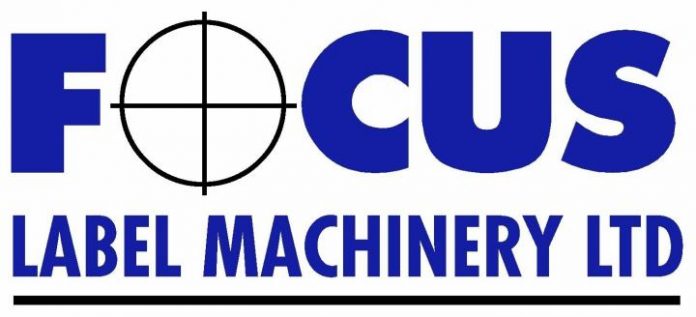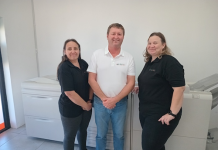According to Focus Label Machinery, modern print equipment aims to increase productivity, usually measured in faster, smarter print cycles, higher product volumes and the number of printing tasks that can be carried out by each press.
Modern label production is a complex, multilevel process, with plenty of room for waste to develop, and equally as much scope for improvements in efficiency and reducing waste.
But productivity is only one side of the equation. On the other sits efficiency, which is measured in how much (or how little) time, money and resources are needed to carry out each task.
Productivity and efficiency, hardware and software
In modern label production, a range of different software packages have been developed to help improve efficiency at all stages of the process, from quoting to receiving orders, processing orders, selecting substrates, ordering materials, producing artwork and designing printing plates, right down to choosing the correct print technology for specific applications.
There are also a growing number of unified print management platforms that combine quoting, materials and ink orders, tooling inventory, workflow management and the ability to choose the correct production techniques – through to final invoicing and cash flow management.
Why use print management software?
The idea behind each of these platforms is to help businesses save time and money on the ‘back-office’ elements of print management, improving efficiency and unlocking higher margins on each print run. When combined with the increased productivity that comes from modern print machinery, efficiency-generating software is a winning formula for all modern label producers.
Many label printing businesses benefit from the same automation platforms that have transformed the back-office functions of other businesses, including marketing automation software, cloud-based accounting, enterprise resource planning (ERP), production lifestyle management (PLM) and customer relationship management (CRM) platforms. Many of these are non-industry specific applications that can be modified to meet the needs of the print sector – some better than others.
However, in addition to general business process platforms, several vendors now offer purpose-designed business management software for print businesses. These print management information systems include Label Traxx, CERM, and printIQ.
Print Management Information System (MIS)
A print management information system, or Print MIS, is a software platform designed to help businesses integrate and coordinate every aspect of the label production process. Print MIS applications are available in a variety of formats, including locally installed software and cloud-based software as a service (SaaS) variants, and can usually be scaled and customised to meet the requirements of different businesses.
What does a Print MIS do?
A Print MIS undertakes a wide range of business functions, simplifying your software infrastructure by reducing the need to use multiple applications. One of the core appeals of such a platform is the ability to automate many of the manual processes involved in print management – saving valuable staff resources. At the same time, a Print MIS gives businesses a bird’s eye view of their print management processes, improving accountability and time management, and identifying areas for improvement.
A typical Print MIS system has a modular structure covering the following areas of print management:
• Quotations and estimates, including cost analysis and compliance checks.
• Order management, including customisable workflow, delivery schedules and order status tracking, with automated updates when milestones are reached.
• Print cycle management, including prioritising orders according to the delivery schedule, automating updates between production/project management and shop floor staff, and generating automated reports and alerts.
• Invoicing, including paperless invoices on job completion, follow-ups and credit control.
• Reporting and analytics, combining diverse data points into visual formats that can be exported to Excel for easy reference.
The benefits of a Print MIS
There are several ways in which implementing a print MIS can improve efficiency throughout the label printing process, including:
Strategic improvements: The visibility provided by a Print MIS makes it easy for businesses to identify pinch points and weaknesses in their processes, allowing them to test strategies for improvement and money-saving.
Integration and cross-compatibility: Using multiple software platforms risks compatibility issues. As good as these platforms are at what they do, they can’t always ‘speak to each other’ effectively or integrate, forcing users to duplicate processes and increasing the risk of human error. Integrating these diverse aspects into a single platform simplifies the process for everybody involved, improving accuracy, and frequently saving money on subscription fees.
Better insight and business intelligence: a Print MIS gives decision-makers instant access to live production data, allowing intelligent decisions to be made on the go, and generally improving the decision-making process. The benefits of this can be felt in marketing and sales – with salespeople able to issue accurate and personalised quotes with a short turnaround, and in strategic investment decisions. The benefits of any new machinery or process can be simulated using live production data, and the results used to generate comparative ROI estimates for different options.
Improved collaboration: clear visibility enables better collaboration between your colleagues, suppliers, and contractors, with better information sharing, improved accountability and less data duplication.
Greater automation: automation brings huge benefits to label printing businesses by reducing the administrative burden of routine functions, including data entry, invoice generation and marketing emails. This is felt not only in saved time but also in reduced errors and improved productivity – employees are free to concentrate on creating value within their roles, bringing a greater sense of achievement and team cohesion.
FOCUS LABEL MACHINERY
jamesb@focuslabel.com
https://www.focuslabel.com





















